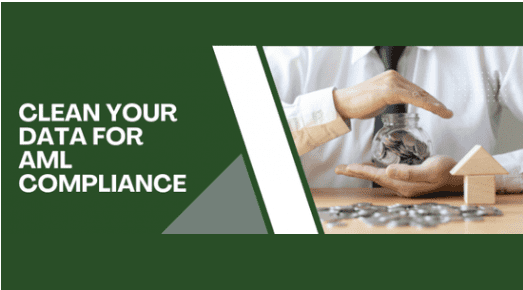Data cleansing is a crucial process for any organisation that relies on accurate and reliable data. It involves identifying and correcting any inaccuracies or inconsistencies in a database, ensuring that the information is up-to-date and reliable. By removing or correcting duplicate records, formatting errors, and outdated information, data cleansing improves the overall quality of your data, leading to better decision-making and more effective communication with customers.
Hopewiser’s data cleansing services and software are designed to help organisations of all sizes improve their match rate and ensure their data is accurate and reliable. With fast, robust, and easy-to-use address software, Hopewiser can help organisations achieve high match rates and maintain the integrity of their data and data sources.
Read Hopewiser’s Ultimate Data Cleansing guide for big businesses here.
Why is data cleansing important?
Data cleansing is a crucial process for organisations that want to improve their match rate and ensure accurate data analysis and reporting. Dirty data, which refers to inaccurate and outdated information, can have disastrous effects on business operations and revenue. By employing data cleansing services, organisations can remove duplications, correct inaccuracies, and fill in missing information. This results in more reliable and high-quality data for analysis.
Having high-quality data is not only important for accurate reporting processes but it also supports informed decision-making. This enables businesses to identify growth opportunities and improve customer service. On the other hand, dirty data can lead to costly errors, missed opportunities, and damaged customer relationships. Ultimately, the impact of data cleansing on business revenue cannot be overstated.
At Hopewiser, we offer address validation and data cleansing software that helps organisations of all sizes improve their match rate and maintain high-quality data. Our software provides accurate global address validation and data cleansing services, ensuring fast, robust, and easy-to-use solutions for organisations looking to elevate the accuracy of their data analysis and reporting processes.
Find out five data cleansing mistakes you need to avoid by reading more at this blog.
Understanding Match Rates
The match rate is a crucial measure in the process of address validation and data cleansing. It represents the percentage of addresses that are successfully matched in a particular dataset. For businesses and organisations that aim to enhance their data quality and precision, this metric holds great significance. It is essential to have a good understanding of how match rates are calculated and ways to improve them. By doing so, one can significantly improve the effectiveness of address validation and data cleansing efforts.
Calculating Match Rates
Match rates are determined by comparing the input address data against a reference dataset such as a Royal Mail PAF with NSPD database. The software uses algorithms and parsing techniques to identify and match the input data with the reference dataset. The percentage of successful matches is then calculated to provide the match rate. Factors such as data quality, completeness, and accuracy can all impact the match rate.
Improving Match Rates
To improve match rates, organisations can take several steps. This includes ensuring the input address data is complete and accurate, using standardised address formats, and leveraging advanced address validation and data cleansing software. By implementing these best practices, businesses can achieve higher match rates and enhance the overall quality of their address data.

Definition of a match rate
The match rate refers to the percentage of input data records that are successfully matched and grouped based on the defined match rules. Match rules are crucial for determining how closely the input data set needs to match to be grouped in the output data.
Factors that affect match rates
Match rates for address validation and data cleansing can be affected by factors such as data size and quality, the inclusion or exclusion of data, and the complexity of match rules. By fine-tuning match rules to include near-matching records, organisations can improve their match rates and ensure data accuracy.
Traditional Data Cleansing Methods
Data cleansing is a crucial process for organisations to ensure the accuracy and reliability of their data. There are several traditional methods available to organisations for cleansing and matching their data. In this article, we will explore these methods and how they can help organisations improve their match rates.
Manual data entry verification is a common method used to clean and match data. This involves manually reviewing data and correcting any inaccuracies. Another method is the use of rules-based data cleansing software, which applies pre-defined rules to identify and correct inconsistencies in the data. Email Address validation software is also beneficial in standardising and validating email addresses to improve match rates.
By implementing these traditional methods, organisations can ensure that their data is accurate, consistent, and reliable for business operations.
Business rules
Address verification is a process that involves verifying the accuracy and deliverability of an address, ensuring that it meets postal standards and can be delivered successfully. Data cleansing involves removing or correcting outdated or inaccurate information within a database. Data matching involves comparing and linking similar or duplicate records within a dataset. Master data management involves creating and maintaining consistent, accurate, and complete data across an organisation.
To ensure the effectiveness and compliance of address validation, data cleansing, data matching, and master data management processes, there are business rules to follow. These business rules may include adhering to postal regulations for address formatting and validation, ensuring data privacy and security standards are met, and implementing quality control measures to maintain accurate and reliable data. These rules help to ensure that these processes are carried out effectively and in compliance with industry standards.
Human intervention
Human intervention is an effective way to improve the accuracy of address validation and data cleansing. This can be done by manually entering or correcting address data to ensure its accuracy and completeness. Additionally, reviewing and resolving address discrepancies or inconsistencies can also lead to higher match rates and more reliable data for businesses.
However, it’s important to note that human intervention can also have negative consequences, particularly on natural systems. Manual data entry, for instance, can result in errors or inaccuracies if not done carefully, which can negatively impact the overall quality of data and lead to incorrect matches or mismatches. Furthermore, excessive human intervention can increase resource consumption and labour costs, which can have negative environmental impacts.
Although human intervention can improve match rates and data accuracy, organisations should consider the potential consequences. Maintaining a balance between intervention and automation is crucial for accuracy and sustainability. Validating addresses and cleansing data can significantly improve match rates. Human intervention can include manually entering or correcting address data. For businesses, this can improve match rates.

Statistical methods
To improve match rates for address validation and data cleansing, it is essential to first comprehend the data at hand. This can be accomplished by utilising statistical methods like descriptive statistics, visualisations, and frequency tables. These tools allow businesses to explore their data, detect patterns, and gain insights into the quality and consistency of their address data.
Verifying normal distribution and identifying outliers is also crucial in improving match rates. Normal distribution ensures that the data is evenly distributed while identifying outliers helps to clean and standardise inconsistent data. In addition, string-matching methods can be used to standardise inconsistent data and improve match rates.
By utilising these statistical methods and data matching techniques, organisations can significantly improve their match rates and ensure the accuracy and reliability of their address data. Hopewiser’s address software provides a comprehensive and user-friendly solution for businesses of all sizes looking to enhance their address validation and data cleansing processes.
Get a free data quality audit from Hopewiser here.
Modern Solutions for Data Cleansing
In today’s digital age, organisations are constantly collecting vast amounts of data. However, without accurate and clean data, the effectiveness of this information is compromised. This is where modern solutions for data cleansing come into play. Whether you are looking to improve your match rate or better understand how data matching works, Hopewiser’s address validation and data cleansing services provide the essential tools to ensure your data is accurate and reliable. With fast, robust, and easy-to-use address software, organisations of all sizes can benefit from improved data quality. Hopewiser’s expert solutions offer modern and effective methods to ensure your data is clean, up-to-date, and ready for action.
Machine learning algorithms
Using machine learning algorithms can help improve the accuracy of matching addresses by validating and cleansing data. Unlike traditional software, machine learning algorithms can learn and adjust to new patterns and variations in addresses, which means they can account for common misspellings or address format variations.
One of the main benefits of machine learning algorithms is their ability to continuously learn and improve accuracy by analysing large amounts of address data. Additionally, by looking at previous matches and context, they can reduce the potential for incorrect suggestions.
It’s important to note, however, that machine learning algorithms are not perfect and may still require manual work to address specific cases or unique address formats. When used with robust address validation software, machine learning algorithms can be a powerful tool for improving match rates and data accuracy.
Conclusion
In conclusion, Hopewiser’s data cleansing solutions offer a comprehensive and user-friendly approach for organisations seeking to improve match rates and enhance data accuracy. Balancing traditional methods with modern technologies, including machine learning and fuzzy matching algorithms, ensures adaptability to evolving data challenges. The significance of match rates in address validation and data cleansing processes cannot be overstated, directly impacting data quality for informed decision-making. Hopewiser’s commitment to providing fast, robust, and easy-to-use address software positions organisations to achieve higher match rates, ensuring their data is clean, up-to-date, and ready for actionable insights in today’s digital age.
Learn the many benefits of data cleansing for big businesses with this blog.
, updated 1st May 2025.






